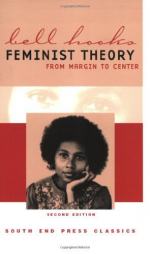
|
| Name: _________________________ | Period: ___________________ |
This quiz consists of 5 multiple choice and 5 short answer questions through Chapters 2 and 3.
Multiple Choice Questions
1. At the end of the Preface (2000), what does the author say regarding "patriarchal mass media" and feminism?
(a) It appropriates feminist language for its own uses.
(b) It completely ignores feminism and feminists.
(c) It trashes feminism or tells the public it is a dead movement.
(d) It creates low self-esteem in feminists.
2. In Chapter 1, the author states that feminist theory and the feminist movement were originally shaped by which type of people?
(a) Middle-class white women.
(b) Working-class women.
(c) Expatriates living abroad.
(d) Middle-class women.
3. According to the author, how has the relationship between feminism and the family often been portrayed?
(a) The family is accepted as a necessary evil.
(b) Feminism has often been portrayed as anti-family and pro-freedom.
(c) Feminism does not seem to address this issue very clearly.
(d) Feminism is often perceived as pro-family.
4. Who has portrayed the relationship between feminism and the family in this way? (See question # 61)
(a) Outsiders to the movement and sometimes feminists in the movement who want to create women-only communities.
(b) The child protective services.
(c) All men.
(d) Most feminists hold this view.
5. "The problem that has no name" is a quotation by which author?
(a) Leah Fritz.
(b) Bell hooks.
(c) Betty Friedan.
(d) Rita Mae Brown.
Short Answer Questions
1. How does the author characterize black women's future role in the feminist movement?
2. In the Preface to the first edition (1984), what general theme does the author present?
3. How were black women's efforts received by white feminists?
4. Why does the author hold her particular beliefs about prioritizing struggles against different forms of prejudice?
5. In the Preface to the second edition, what is the first factor considered by black parents when a child is born, according to the author?
|
This section contains 428 words (approx. 2 pages at 300 words per page) |

|




